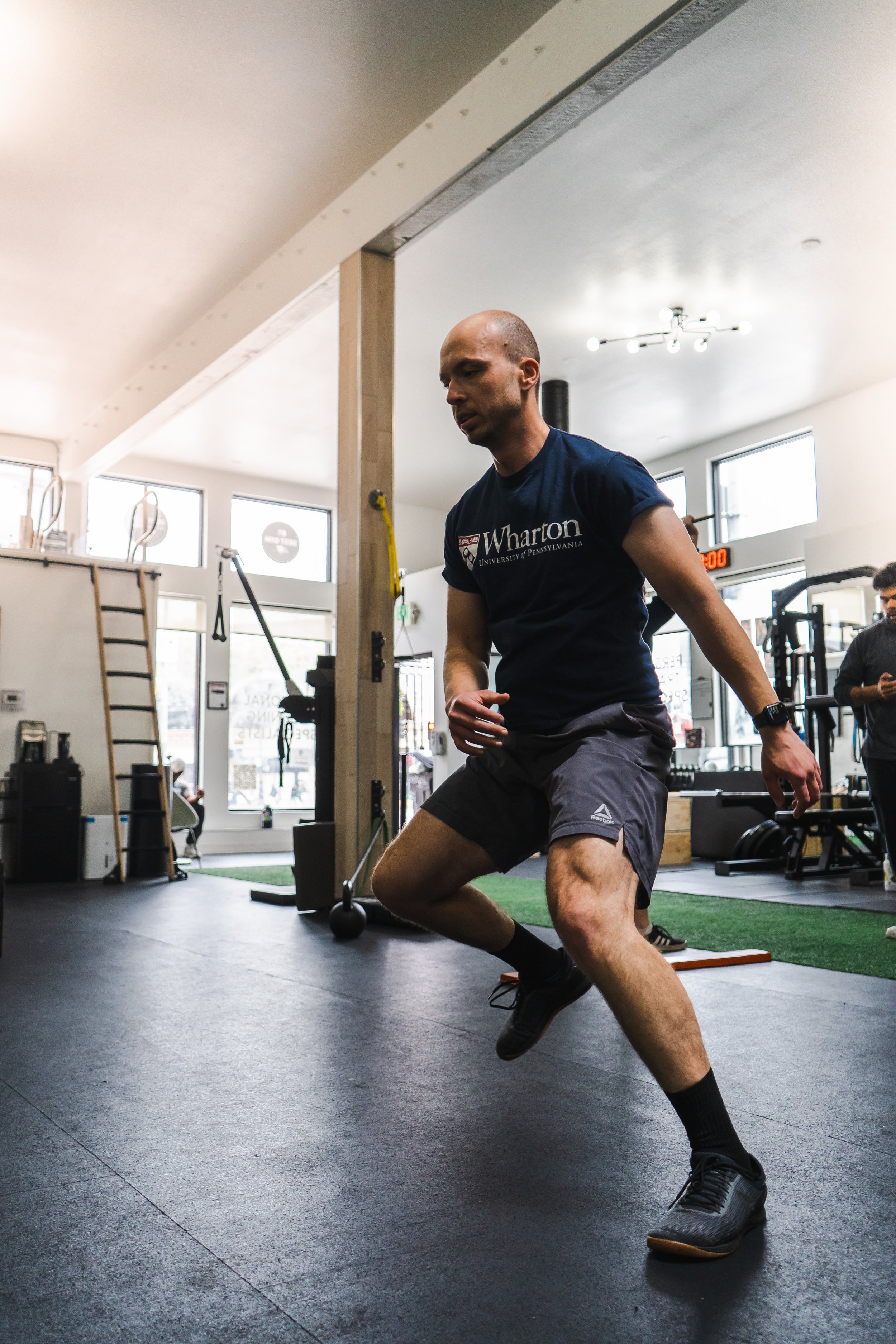10 Ways to Make the Most of Personal Training
1. Show up.
The number one thing you need to do to take full advantage of your training is to actually be there. If your schedule allows it, set consistent times that you meet with your trainer each week and stick to them. We know that life can get hectic, but your training should be as consistent as possible as we know it takes consistency to attain any fitness goal. There are plenty of gyms out there that’ll take your membership dues and not care if you actually come in. If you’re making the investment of hiring a trainer, we want you to be there and we want the best for you.
2. Do your homework.
Not everyone will have homework assigned to them by their trainer because everyone’s exercise program is different. However, If you do have homework from us, take the time to do it. You only see your trainer for a few hours per week, so homework can help you continue to improve even when you’re not in the gym. There may be similarities, but each athlete’s homework will likely be different: for some, it’ll be a stretching routine; for others, cardio; and for certain people, a full exercise routine. Though they may be different, they all have one thing in common and that’s to make you better at something. Homework will go along with whatever goals you’re working towards at the time, but all homework is important. Work with your trainer to figure out times you can do it, and I suggest putting it in your schedule like a training session.
3. Communicate.
Let us know! Not everything is for sharing with your trainer, but when in doubt, let them know what’s going on. This could mean letting us know about any pain you may be feeling from time to time, a type of exercise you really enjoy, or even a when you’re having an especially good or bad day. With pain, if you let your trainer know early that a certain pain keeps coming back, then they can adjust the program or perhaps even fix it. A small pain ignored for a long period of time could turn into an injury that has you out for months. Next, let’s say you really enjoyed the boxing class you took the other day - let your trainer know and they can work some boxing into your program. It’s important to enjoy your time at the gym, so if there are ways we can make that happen, we will!
4. Review your goals after each reassessment.
You had a goal in mind when you hired your trainer, whether it be to just get into better shape, to lift as heavy as you had before, or even to run a marathon. First off, be sure that you have something being measured that relates to that goal, then make sure you’re working towards it. Each time you get measured is a time for you to think about (or rethink) what you want to accomplish. I’ve had athletes who came in looking for weight loss who, after losing weight, decided they wanted bigger arms. I’ve also had athletes initially come in to correct movement issues, then progress to training for a sport they used to play or a new race/competition after we corrected them. If your trainer still thinks you want to work on one thing but you’re thinking about another, tell us! If you don’t, your training won’t align with your goals and you won’t be getting what you want out of the experience.
5. Make good choices outside of the gym.
One “bad” weekend of going out, drinking, eating, etc. does not ruin a workout program, but doing so consistently will make achieving goals much harder. Not all trainers have a nutrition component to their training, but they should all know how to eat well themselves. Ask us questions or see if we can point you in the right direction on a certain subject, as the internet will give you a million different answers for the same question. A complete healthy lifestyle includes working out, good nutrition, and adequate recovery. If you’re serious about attaining your fitness goals, you have to live it outside the gym as well, which means putting down the burger every once in a while and getting your 6-8 hours of sleep as often as possible.
6. Give it time.
Rome wasn’t built in a day, and fitness goals don’t come in a month. That is all.
7. Make sure to plan around travel when possible.
The holiday season is when a lot of athletes start to fall off of their programs. Yes, this has to do with the parties that come along with the holidays, but it also has to do with athletes being out of town and missing their workouts. At Perform for Life, we do our best to make sure our athletes get all of their workouts in each month to stay on track with their goals. One strategy we use for this is to load the weeks before and/or after travel with the extra sessions that would’ve been used the week the athlete is traveling. This, along with travel exercise plans that are appropriate for the athlete to do alone, means the progress gained doesn’t have to take a hit. Be sure to communicate beforehand with your trainer so that they can do their best to accommodate the extra sessions and to get travel workouts prepared.
8. Give good effort during the session.
Coaches should motivate, but if the athlete needs 100% of the energy to come from them, it won’t happen. Remember that you’re most likely not the only person your trainer is seeing that day, and to provide all of the energy for every session is too much to ask from them. The gym is a place for you to work on you, a sanctuary from the outside world. One of the best things I learned from my college baseball coaches was the term “separate.” From the time it took you to walk down to the field from the locker room, it was your job to separate from that disappointing grade on a test (*cough* not me *cough*) or that argument with your roommate and to be in the moment, ready to do what was asked of you. They were there to help me be the best baseball player I could be, and we’re here to help you be the best that you can be.
9. Use their network.
Trainers should have at least a small network of health and wellness professionals around them that they can refer their clients to. If you have aches or pains and want to see someone, ask your trainer if they know a good acupuncturist, chiropractor, or whatever method you prefer. I’ve even helped an athlete pick a new gym in the city he was moving to by checking out it’s trainers and making sure they specialized in what he needed. The fitness world is relatively small, so see if your trainer can help form a fitness team you can trust.
10. Ask questions.
Coaches are full of knowledge and want you to learn! I’m not saying that you should take up half of the session asking why each exercise was chosen or what it does for you, but if you’re confused about something, just ask. Trainers appreciate athletes who want to know about their bodies and about the training so we’ll do our best to educate them on what’s going on. Sometimes exercises don’t quite make sense, so ask where you should be feeling it or if you’re set up correctly. One of my athletes asked me why I always gave them a certain cue during an exercise, and this sparked a small show-and-tell of how the cue I gave them during that exercise put their back in a safe position to do the lift. It allowed me to have more confidence in that athlete when she does her homework or if she ever goes back to training on her own. No trainer wants an athlete to come to them and leave having just had some good workouts - we want to show you the right way to do things, and have you continue that wherever it may be.











